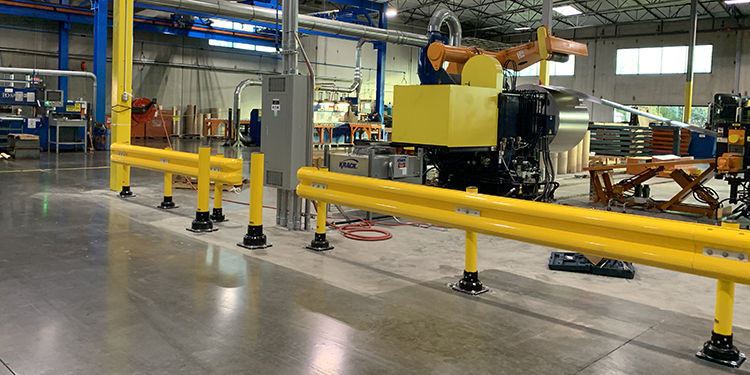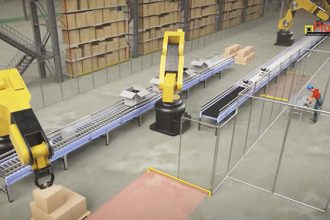Standardized Crash Testing Methodology Helps Purchasers Assess Different Industrial Guardrails And Barriers

Prior to the publication of ANSI MH31.2 – Test Method for Crash Testing Industrial Guardrail Barriers and Barrier Posts by the members of the Protective Guarding Manufacturers Association (ProGMA), a standardized testing methodology to assess the performance of these protective devices, specifically industrial guardrails and barriers, did not exist. Nearly every manufacturer of steel and/or polymer bollards, industrial facility protection guardrail, and industrial pedestrian guardrail conducts independent tests of their products. The tests of these industrial guardrail and post systems, however, may not be conducted in the same manner.
That lack of consistency made it difficult for those seeking to compare a variety of product options for safeguarding against motorized vehicle and forklift impacts in industrial and warehouse environments. With the ANSI MHI31.2 standard, however, it is much easier to assess different protection options for different applications, including pedestrian walkways, critical equipment, rack structures, automated machinery, facility columns, corners, walls, electrical or ventilation equipment, for example.
The standard calls for the impact testing to be performed at a facility that has been accredited as compliant with ISO/IEC 17025 by the American Association For Laboratory Accreditation (A2LA), such as the Texas A&M Transportation Institute (TTI). It also outlines a testing methodology that provides a variety of options for gross weight of the vehicle and its travel speed to establish an impact rating for the guardrail or post device being tested.
A surrogate test vehicle — or “bogie” — constructed to emulate a powered industrial truck weighing 9,000, 12,000 or 15,000 pounds is crashed into the barrier, which has been mounted directly on ground-level concrete with robust anchors. The concrete slab must be made of normal weight, unreinforced concrete having 28-day compression strength of 3,000 to 3,500 pounds per square inch (PSI). The test vehicle is to be accelerated to a speed of 3.0, 5.0, or 7.0 miles per hour prior to impact.
During testing, both the impact velocity and impact angle of the surrogate test vehicle are measured and documented with video, high-speed video, and photographs. For guardrails consisting of two posts and a span of one or more rail sections connected between them, two separate impact tests are conducted: one aimed at the end of the barrier post, the other perpendicular to the center of the rails spanning the distance between the two posts. Bollard systems are subject to a single test, with the impact aligned with the center of the post.
The maximum dynamic penetration distance of the test vehicle into the space behind the guardrail or bollard is recorded as the primary measure of overall test performance: its impact rating designation. Any distance up to 24 inches is deemed acceptable; any penetration beyond 24 inches is considered too far of an intrusion into the safety zone. The impact rating allows a prospective buyer of a tested industrial guardrail or barrier post to understand what degree of impact protection the device will deliver based on the vehicle’s speed at the time of impact. It also aids in the determination of the appropriate positioning of the guardrail or bollard to prevent contact in the event of a collision.
Want to learn more about the test methodology? Purchase the ANSI MH31.2 – Test Method for Crash Testing Industrial Guardrail Barriers and Barrier Posts standard. Additionally, the members of ProGMA are available for guidance and recommendations.



